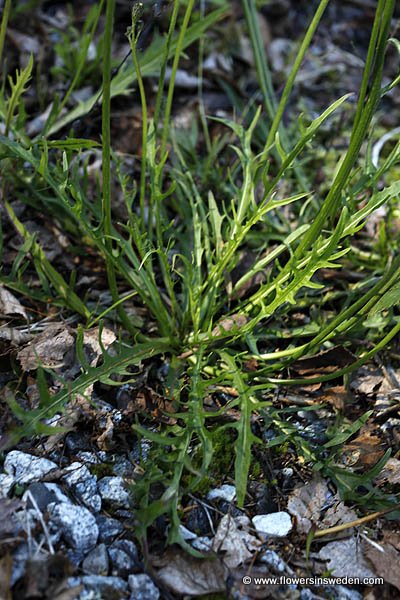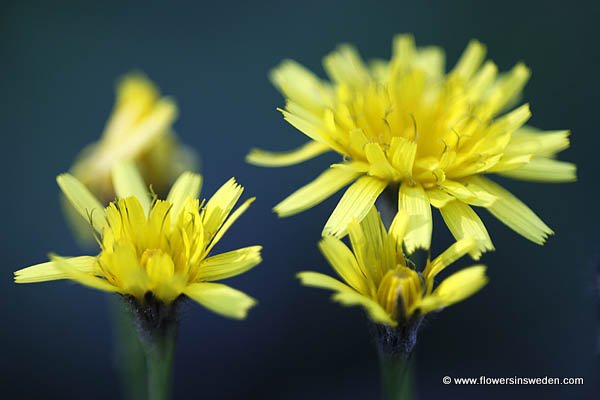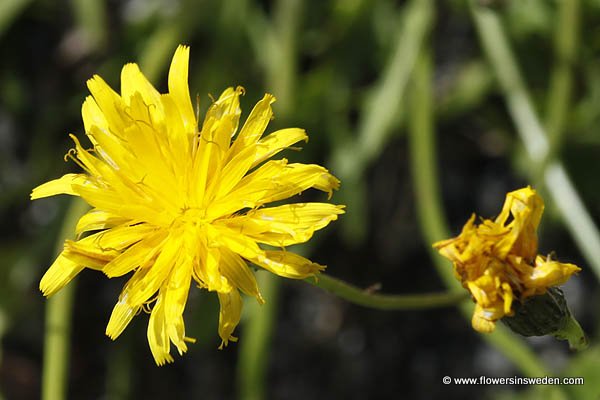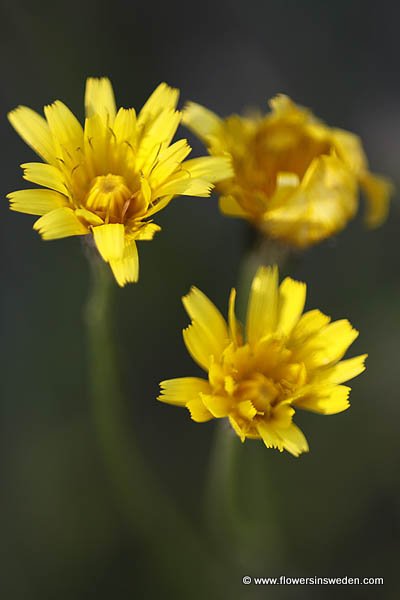|
|
| Life form: |
| Perennial |
| Stems: |
| Height 10-80 cm; short rhizomes; single or few stems, branched above, glabrous towards the base, and slightly hairy towards the flower heads; scale-like bracts on the flower stalks near the flower heads |
| Leaves: |
| Basal rosette; oblanceolate, 4-35 cm long, 5-40 mm wide, deeply lobed with glabrous or hairy surfaces |
| Inflorescence: |
| clusters of 2 to 5 flower heads |
| Flowers: |
| Involucral bracts, glabrous or hairy, narrow, 10-12 mm long; Yellow flowers, ligulate, 10-18 mm long with five teeth at the tips |
| Flowering Period: |
| July, August, September, October |
| Fruits: |
| Non-beaked cypselae, 4-7 mm long with pappus of feathery, 5-8 mm long bristles |
| Habitat: |
| Grasslands, pastures, roadsides and cultivated land. |
| Distribution: |
| Throughout the country |

Derivation of the botanical name:
br>Leontodon, leon, λεων, οντιϛ, a lion; odous, tooth, because of the toothed leaves.
autumnalis, pertaining to autumn.
Scorzoneroides, resembling Scorzonera, from Old French scorzon, a snake; possibly from the use of its root as a cure for snakebite.
- The standard author abbreviation L. is used to indicate Carl Linnaeus (1707 – 1778), a Swedish botanist, physician, and zoologist, the father of modern taxonomy.
- The standard author abbreviation Moench is used to indicate Conrad Moench (1744 – 1805), a German botanist.



|





